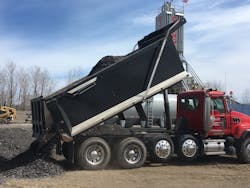Preventing Back-over Incidents
Every week, back-over incidents seriously injure or claim the lives of thousands of people around the world. More than half are hit by trucks.
Additionally, back-up incidents account for a quarter of deaths in the workplace, and 90 percent of these occur off-road in loading bays, truck stops, quarry sites, and warehouses.
For those at work on construction job sites, reversing vehicles and machinery pose a definite danger. The rear blind spot is a huge problem, regardless of the vehicle or machine, and is one of the main causes of back-up incidents.
Traditional ‘beep beep’ alarms were first introduced to Europe in the 1970s. The potential for these alarms to save lives was quickly recognized. In 1979 in the U.S., OSHA made back-up alarms compulsory on large construction vehicles.
Back-up alarms provided a vital step forward in road and workplace safety, yet over time they have been shown to have various inherent issues. These include noise pollution and the associated disturbances, and the overall safety credentials of the traditional ‘beep beep’ system, which can be often ignored.
Corey Heniser, a vehicle safety expert at Brigade Electronics, explains how his company worked to solve this issue.
“Research has shown that pedestrians had become so used to the sound of traditional, tonal ‘beep beep’ alarms that they weren’t hearing them,” Heniser says. “It was also discovered that drivers tended to lose the perception of responsibility for being vigilant behind the wheel, relying too heavily on their alarms for avoiding collisions. At Brigade, we worked to create an alternative alarm in the form of ‘white sound.’”
Created using broadband technology, the alarm, called "bbs-tek White Sound" emits a ‘ssh-ssh’ sound, similar to breaking waves, that is highly directional, gentler on the ear, and easier for pedestrians to pinpoint. It is currently the only back-up alarm to receive a Quiet Mark award from The Noise Abatement Society, which is currently the only international mark of approval for low-noise technology.
Lafarge is one company that has benefited, fitting vehicle safety systems to its fleet of concrete mixing trucks. With road incidents being a significant concern for the construction industry, the company took action to ensure its cement mixers were fitted with vehicle safety technology to prevent road and site incidents.
Lafarge installed bbs-tek, as well as Brigade’s Backeye360, which is an intelligent camera monitoring system that eliminates blind spots by providing a complete surround view of all four sides of a vehicle.
“With just one look, drivers have a complete surround view of the vehicle without any blind spots and the added peace of mind that pedestrians will also be warned by the white sound alarm,” says Othmane Jennane, president of Trans Route Béton, which installed Brigade’s technology onto Lafarge’s vehicles. “It provides absolute safety.”
While ‘beep beep’ back-up alarms are still widely used across the globe, operators can now consider replacing them with the multifrequency version.
“The benefits of white sound for road and workplace vehicle safety are manifold and proven to save lives,” says Heniser.
Source: Brigade Electronics
